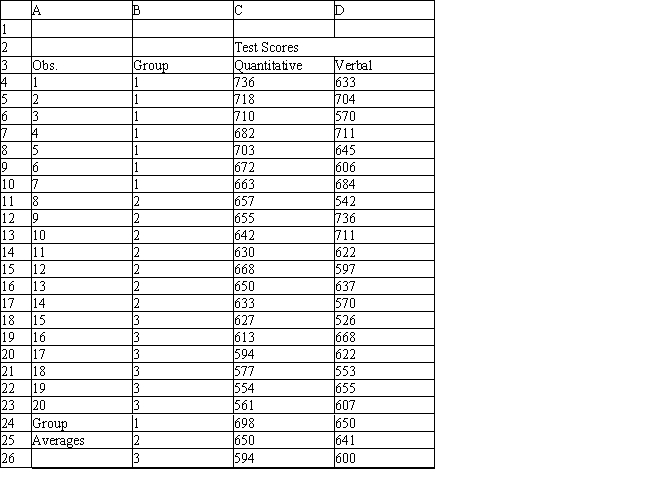Exhibit 10.2
The following questions are based on the problem description and the output below.
A college admissions officer wants to evaluate graduate school applicants based on their GMAT scores, verbal and quantitative. Students are classified as either successful (Group 1) , marginally successful (Group 2) or not-successful (Group 3) in their graduate studies. The officer has data on 20 current students, 7 successful (Group 1) , 6 marginally successful (Group 2) and 7 not successful (Group 3) . 




-Refer to Exhibit 10.2. What is the quantitative test score value of the group centroid for group 2?
Definitions:
Q4: Refer to Exhibit 11.15. What is the
Q10: Why would a manager be interested in
Q14: Refer to Exhibit 11.22. Based on the
Q16: The goal of discriminant analysis is<br>A)to develop
Q16: Refer to Exhibit 9.3. Interpret the meaning
Q22: Refer to Exhibit 11.8. What formula should
Q31: What is the correct Risk Solver Platform
Q44: An investor is developing a portfolio of
Q51: Using the information in Exhibit 12.3, what
Q86: Refer to Exhibit 11.12. What are